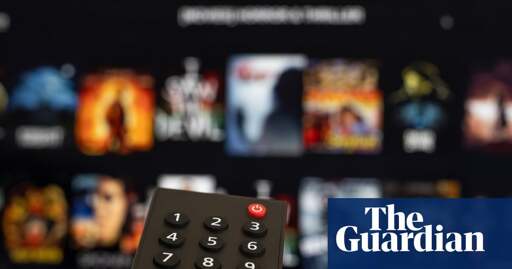A decade and a half on from the Pirate Bay trial, the winds have begun to shift. On an unusually warm summer’s day, I sit with fellow film critics by the old city harbour, once a haven for merchants and, rumour has it, smugglers. Cold bigstrongs in hand (that’s what they call pints up here), they start venting about the “enshittification” of streaming – enshittification being the process by which platforms degrade their services and ultimately die in the pursuit of profit. Netflix now costs upwards of 199 SEK (£15), and you need more and more subscriptions to watch the same shows you used to find in one place. Most platforms now offer plans that, despite the fee, force advertisements on subscribers. Regional restrictions often compel users to use VPNs to access the full selection of available content. The average European household now spends close to €700 (£600) a year on three or more VOD subscriptions. People pay more and get less.
According to London‑based piracy monitoring and content‑protection firm MUSO, unlicensed streaming is the predominant source of TV and film piracy, accounting for 96% in 2023. Piracy reached a low in 2020, with 130bn website visits. But by 2024 that number had risen to 216bn. In Sweden, 25% of people surveyed reported pirating in 2024, a trend mostly driven by those aged 15 to 24. Piracy is back, just sailing under a different flag.



I think the YouTube model is more of the high tech future of entertainment that was promised to us. It’s one subscription to a massive service that has entire channels dedicated to whatever niche subject you are after.
Unfortunately, that great idea of a project got purchased by Google a very long time ago, and it is well into the user-hostile enshittification phase.
Hey, so, I’m old as shit and sti remember utopian scifi. Hi. No.
We were promised art without the need for patronage. Plenty. Post-scarcity. Was the dream. Was what even both sides of the fucking cold war at least had to claim, one maybe even kind of believed in¹. No subscription. No pay. And if you want to pull the ‘well yes but we aren’t all the way there yet’ card, then explain to me how anyone can afford to eat off what YouTube or spotify pays them, then find me someone dumb enough that they still believe that’s where any of this is aiming or heading.
¹while executing an unspeakably bloody purge over a bad font choice. Not, like, ‘american primary school’ bloody, but certainly well past the bounds of good taste.
My first reaction to your reply was that post-scarcity utopia is a bit broader in scope than having a decent streaming platform with existing technology.
But nah, you’re right. It’s the same greedy bullshit preventing something resembling a post-scarcity world that prevents tech products from staying good.
Unless they are free, of course. In both ways!
My first reaction to your reply was that post-scarcity utopia is a bit broader in scope than having a decent streaming platform with existing technology.
But nah, you’re right. It’s the same greedy bullshit preventing something resembling a post-scarcity world that prevents tech products from staying good.
Unless they are free, of course. In both ways!
I mean if you are talking pre-google youtube, I don’t believe it had a subscription model… or any real plan to profit or pay it’s creators. It was both hemorrhaging money itself, and giving it’s creators nothing.
Post google youtube, I guess yeah it is, but worth noting mostly it isn’t exactly a high production values system, with the exception of like mr beast etc… which make a boatload of money by still following the same traps as regular TV, catering to the lowest common denominators, microanalyzing maximum views on every aspect.
Yeah it’s more about the idea of Youtube rather than something it actually used to be. Google has owned it so long that there’s no real difference.